
Reducing physican burnout through AR/MR tech
Project Lead Strategist and UX Researcher
Project Duration
10 weeks
Project AskResearch, design and develop recommendations to reduce physician burnout. Integrating the use of AR/VR/MR technology in their workflow, under the areas of Diagnostic, Treatment, Recovery and Service.
My Role
Project planned, managed, and executed with design thinking process integration. Led the process and orchestrated strategies for a team of 14 using human-centered design to inform and develop innovative solution to reduce physician burnout leveraging AR/VR tech.
Project Result An AR-driven holistic system that is integrated with the physicians' workflow, enhancing their communication, interactions within teams and patient relations. This holistic system resulted in reducing visual clutter, providing easy access to patients’ data and interoperability of data leading to reduced physician burnout.
10 weeks
Project AskResearch, design and develop recommendations to reduce physician burnout. Integrating the use of AR/VR/MR technology in their workflow, under the areas of Diagnostic, Treatment, Recovery and Service.
My Role
Project planned, managed, and executed with design thinking process integration. Led the process and orchestrated strategies for a team of 14 using human-centered design to inform and develop innovative solution to reduce physician burnout leveraging AR/VR tech.
Project Result An AR-driven holistic system that is integrated with the physicians' workflow, enhancing their communication, interactions within teams and patient relations. This holistic system resulted in reducing visual clutter, providing easy access to patients’ data and interoperability of data leading to reduced physician burnout.












The Challenge
Physician burnout is a highly ubiquitous problem in the healthcare space, with over 50% of physicians in the United States reporting symptoms related to burnout. The current solutions do not address the core problem of offering solutions that enable physicians to spend less time with documentation and more quality time with patients. 3M understands that this is a critical problem to be addressed. With this in mind, they collaborated with SCADpro to research, design and develop innovative solutions to reduce physician burnout.
Our Approach

Diagnose
We started the research process with a detailed secondary study of the medical field, delving into the areas of physician workflows, existing causes of burnout, healthcare and wellness trends, technological advancements in the field of AR and VR, and the implications of Covid-19 on the sector’s future.
This study was done by the following method: Key fact analysis, foreseeing trends and popular media scan.

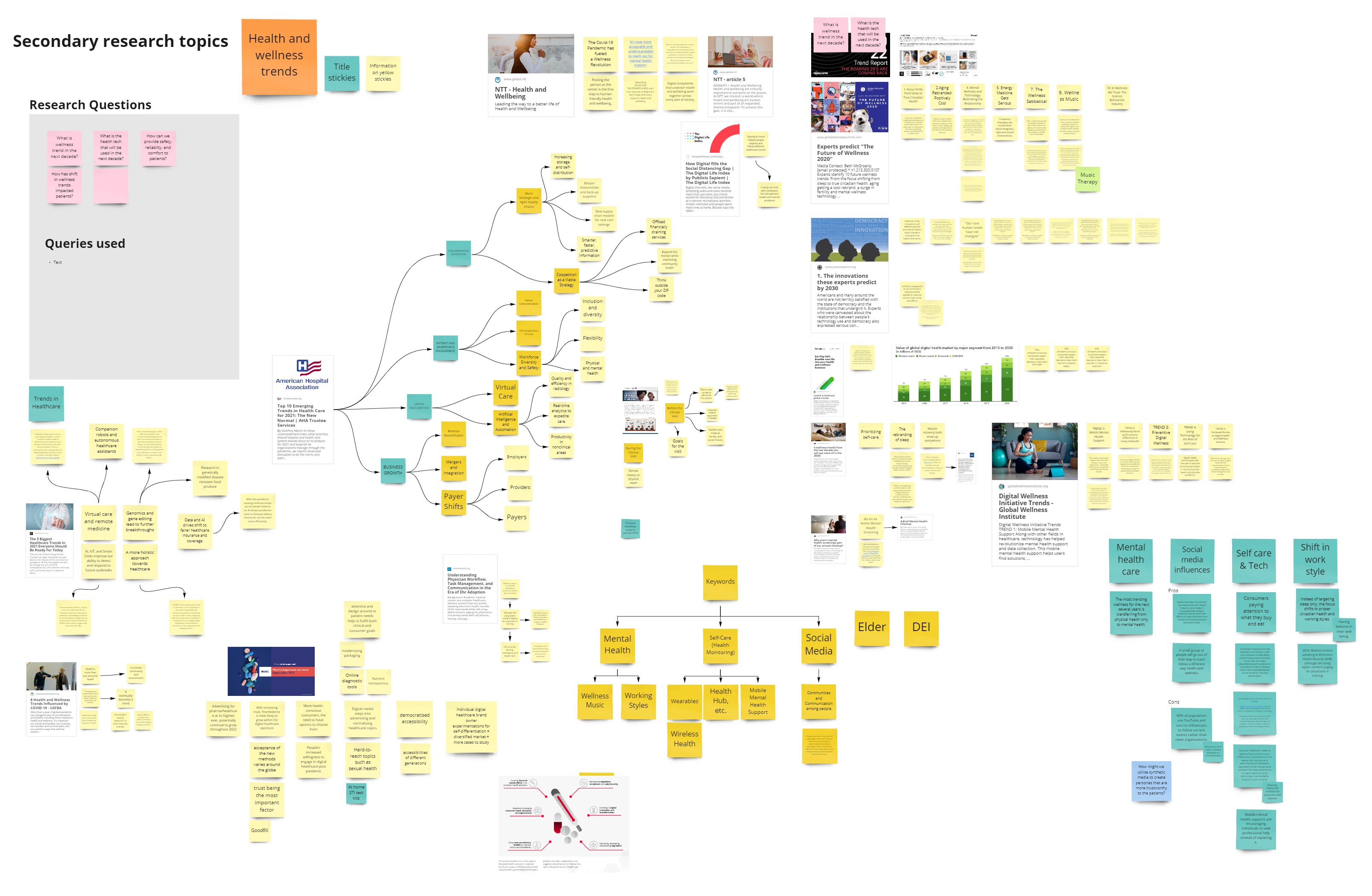
Through this process, we identified the key drivers of physician burnout and I defined an overarching theme that is: lack in organizational efficiency.
Key Drivers of Burnout
The findings indicated that the existing medical ecosystem was divided with the root cause not being addressed at an institutional level. Most of these issues resulted in physicians having to choose between documentation and quality patient interactions, resulting in an increased cognitive load and burnout.
The findings indicated that the existing medical ecosystem was divided with the root cause not being addressed at an institutional level. Most of these issues resulted in physicians having to choose between documentation and quality patient interactions, resulting in an increased cognitive load and burnout.






Primary Research
In addition to the secondary research, we conducted qualitative research which included 7 SME (Subject Matter Expert) interviews and 3 diary studies along with ethnographic research through media. The insights derived helped broaden the team’s understanding of the physicians’ workflow, their behaviours and their key pain points.
In-depth interview discussion guide Click here
In addition to the secondary research, we conducted qualitative research which included 7 SME (Subject Matter Expert) interviews and 3 diary studies along with ethnographic research through media. The insights derived helped broaden the team’s understanding of the physicians’ workflow, their behaviours and their key pain points.
In-depth interview discussion guide Click here

Stakeholder Ecosystem Map
Based on the secondary research and the insights gained from the diary studies, a series of ecosystem maps were constructed to visualize the interactions that take place within the medical workflow. The ecosystem maps highlighted the focus areas for ideation, emphasizing on interactions that experienced the most pain points.
Based on the secondary research and the insights gained from the diary studies, a series of ecosystem maps were constructed to visualize the interactions that take place within the medical workflow. The ecosystem maps highlighted the focus areas for ideation, emphasizing on interactions that experienced the most pain points.

Tech Research and Competitive analysis
Since the project brief focuses on leveraging AR/VR/MR technology, we looked into the existing and emerging uses of different technologies.
Along with this, we developed a competitive analysis matrix to get an in-depth understanding of the existing market. We analyzed the competitors on the bases of provider-centric and patient-centric varying across their technological applications.
Since the project brief focuses on leveraging AR/VR/MR technology, we looked into the existing and emerging uses of different technologies.
Along with this, we developed a competitive analysis matrix to get an in-depth understanding of the existing market. We analyzed the competitors on the bases of provider-centric and patient-centric varying across their technological applications.
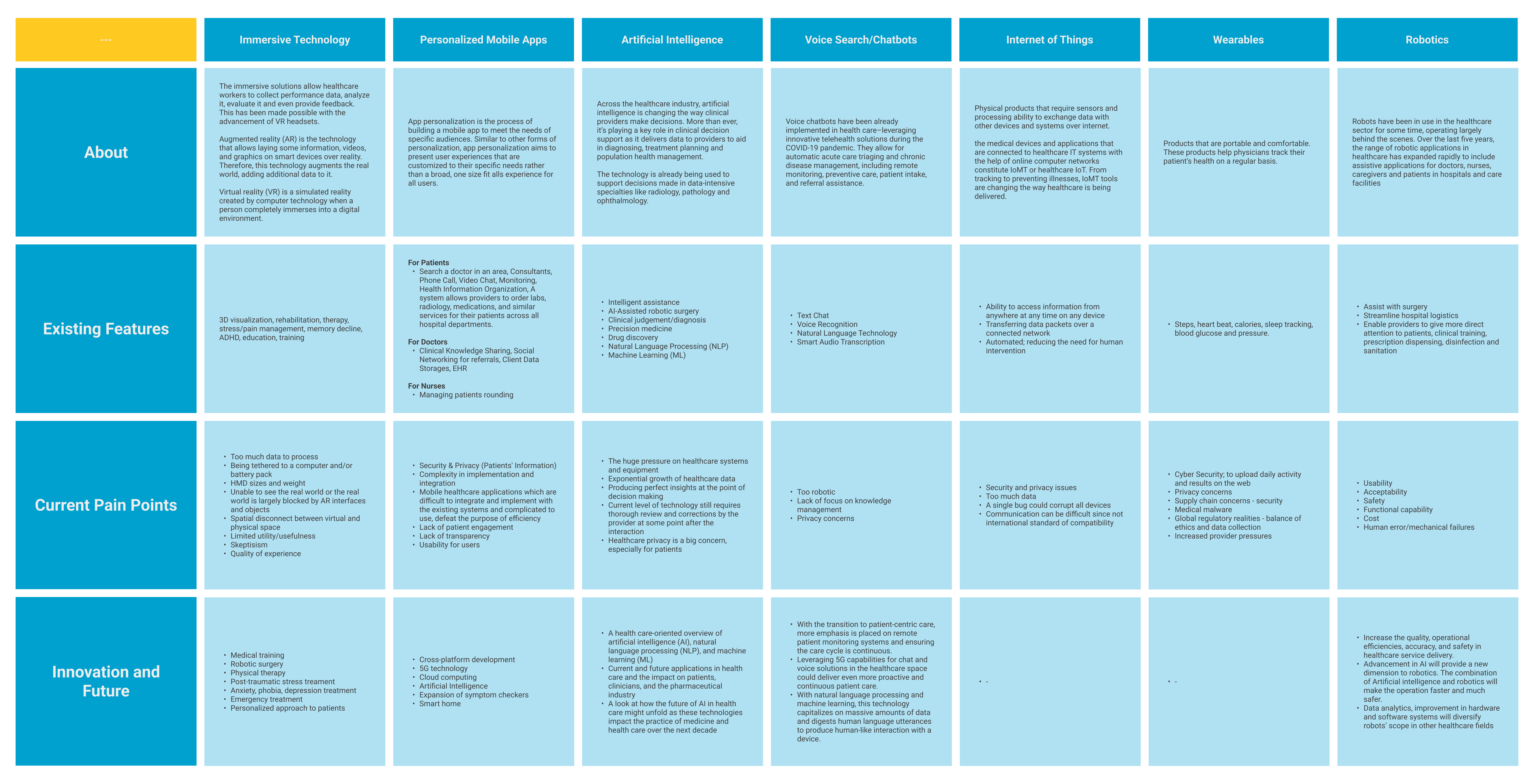

I defined the pain points through this analysis that are
poor usability and redundancies of current products, difficulty with
patient-physician communication and general limitations of mixed reality
technologies.
I identified opportunities based on the pain points, which were: the scope for better system integration, the use of mixed reality to visualize aggregated data and how to improve patient-physician interactions.
I identified opportunities based on the pain points, which were: the scope for better system integration, the use of mixed reality to visualize aggregated data and how to improve patient-physician interactions.
Define
Defining a single direction for the project was the most challenging part for me.
Applying the methods of design thinking and strategy, I followed the Two Diamond approach where I along with the team diverged and converged on various aspects, brainstormed on various scenarios and finalized our concept.
We conducted activity of dot voting identifying three potential opportunity areas on which we ideated and proposed three concepts to the clients. We story boarded each of the concepts keeping the users in mind and the respective opportunity areas.
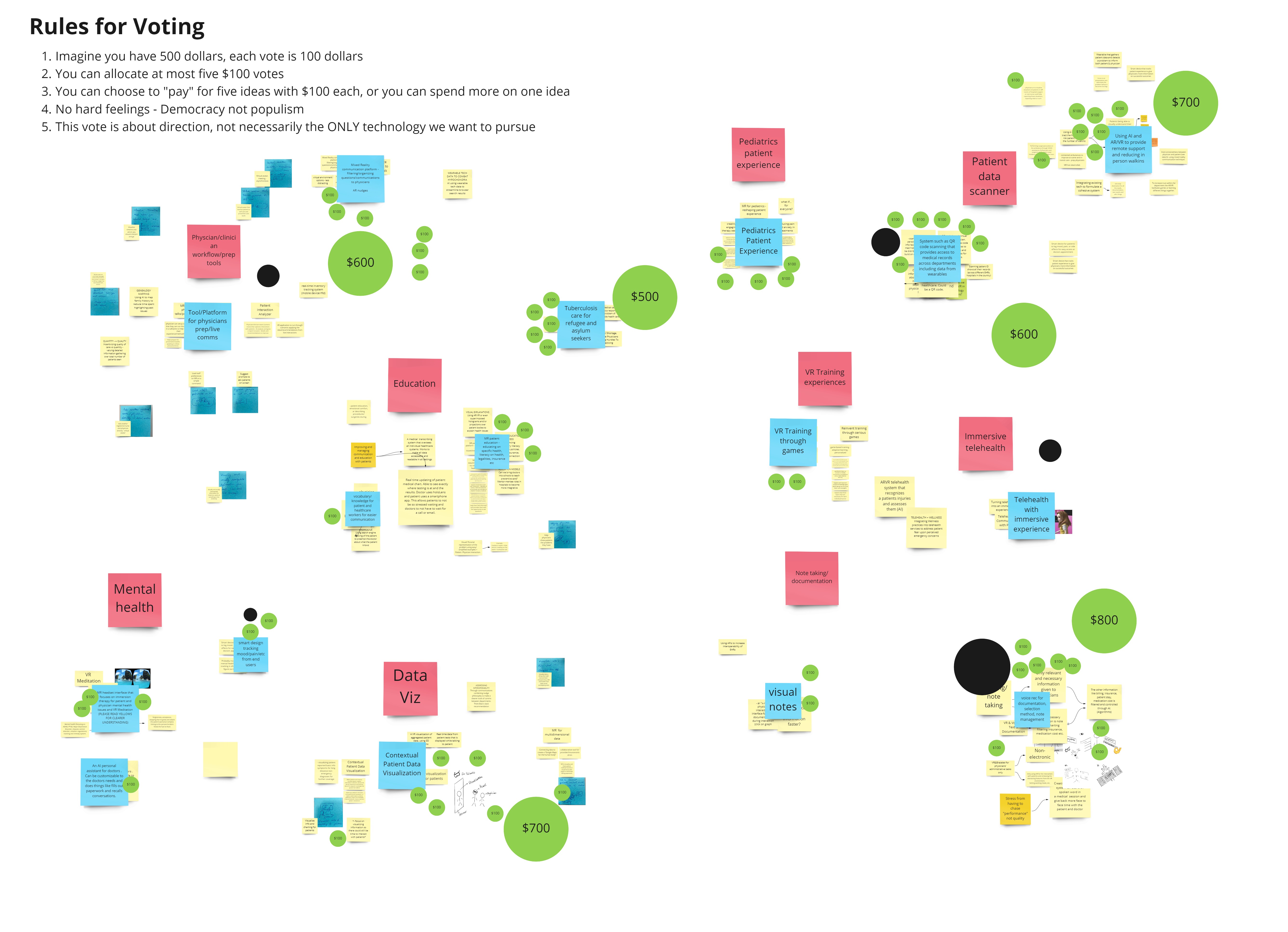

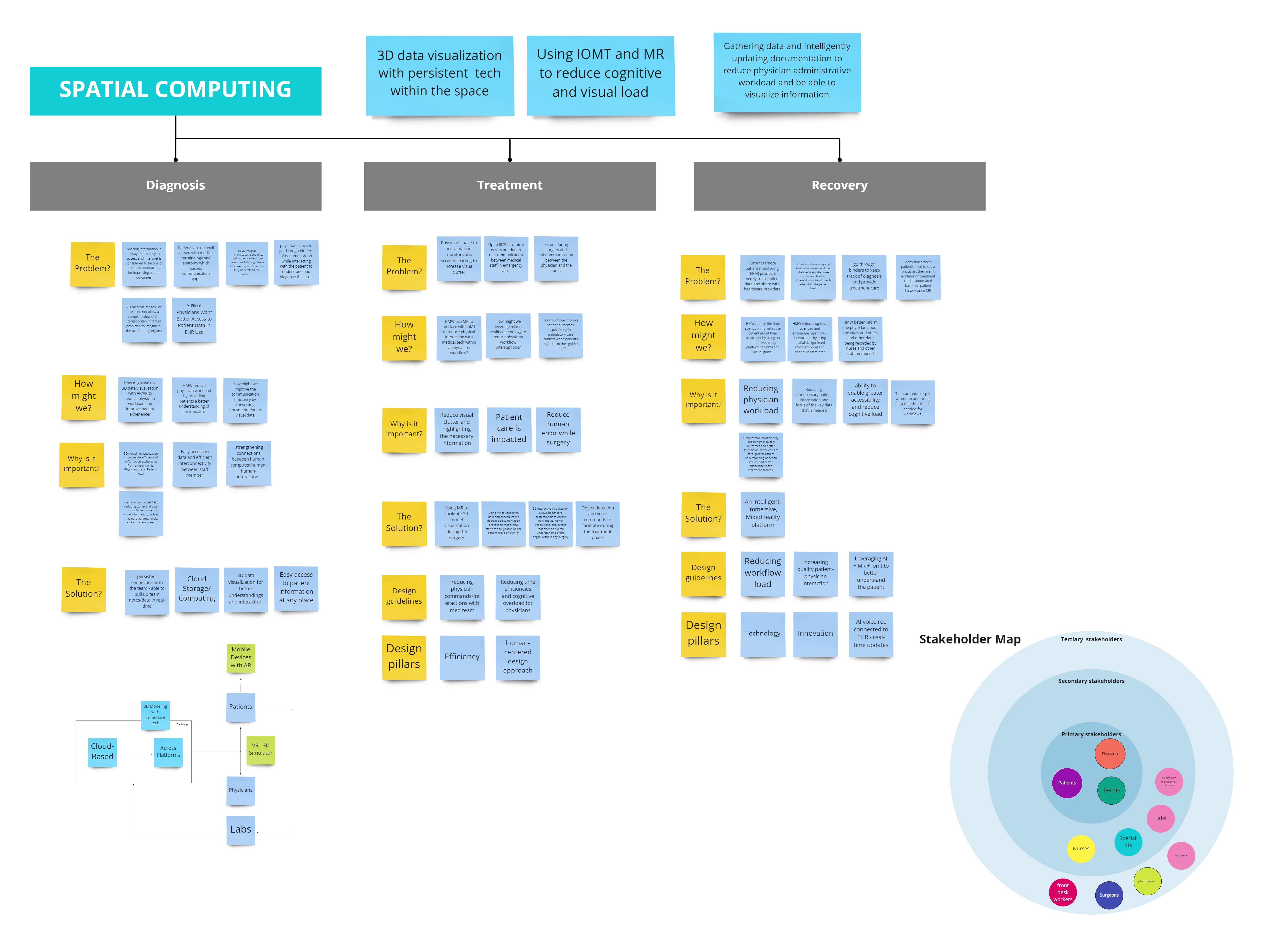


Co-prioritizing with 3M, we choose Spatial Computing and Persistent Tech as our base concept for developing our final solution



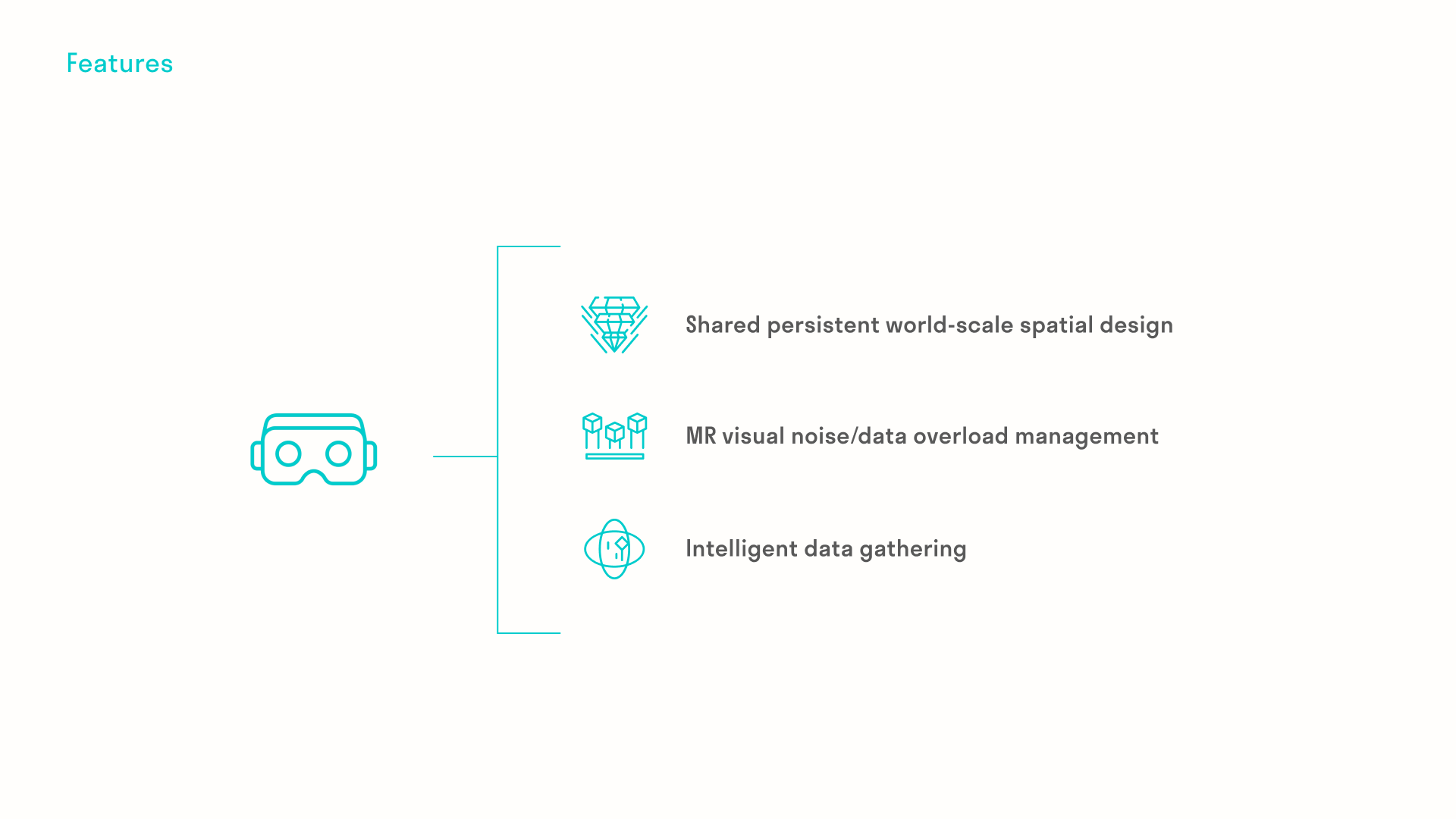

How might we design a holistic and humanised
system, enhancing the physicians’ workflow environment. How will we increase organisational efficiency by
leveraging the capabilities of Spatial Computing
and Persistent Tech?
Ideation
During the ideation phase, we researched the capabilities and limitations of Spatial Computing and Persistent Technology to better understand the application and usability (refer to the process book for more details). We then prioritized the three primary environments for taking the proposed design system forward: Hospital roundings and patient interactions, Cross-disciplinary pre-op meetings and consultations, and Surgeries within the OR.

These three environments were identified keeping
in mind the design pillars of Empathy, Connection, and Intelligence.
Analysing the existing physician workflow environment, we ideated on the solution offerings based on the defined design pillars and developed design guidelines and well-versed journey maps, reflecting the ideal environment.

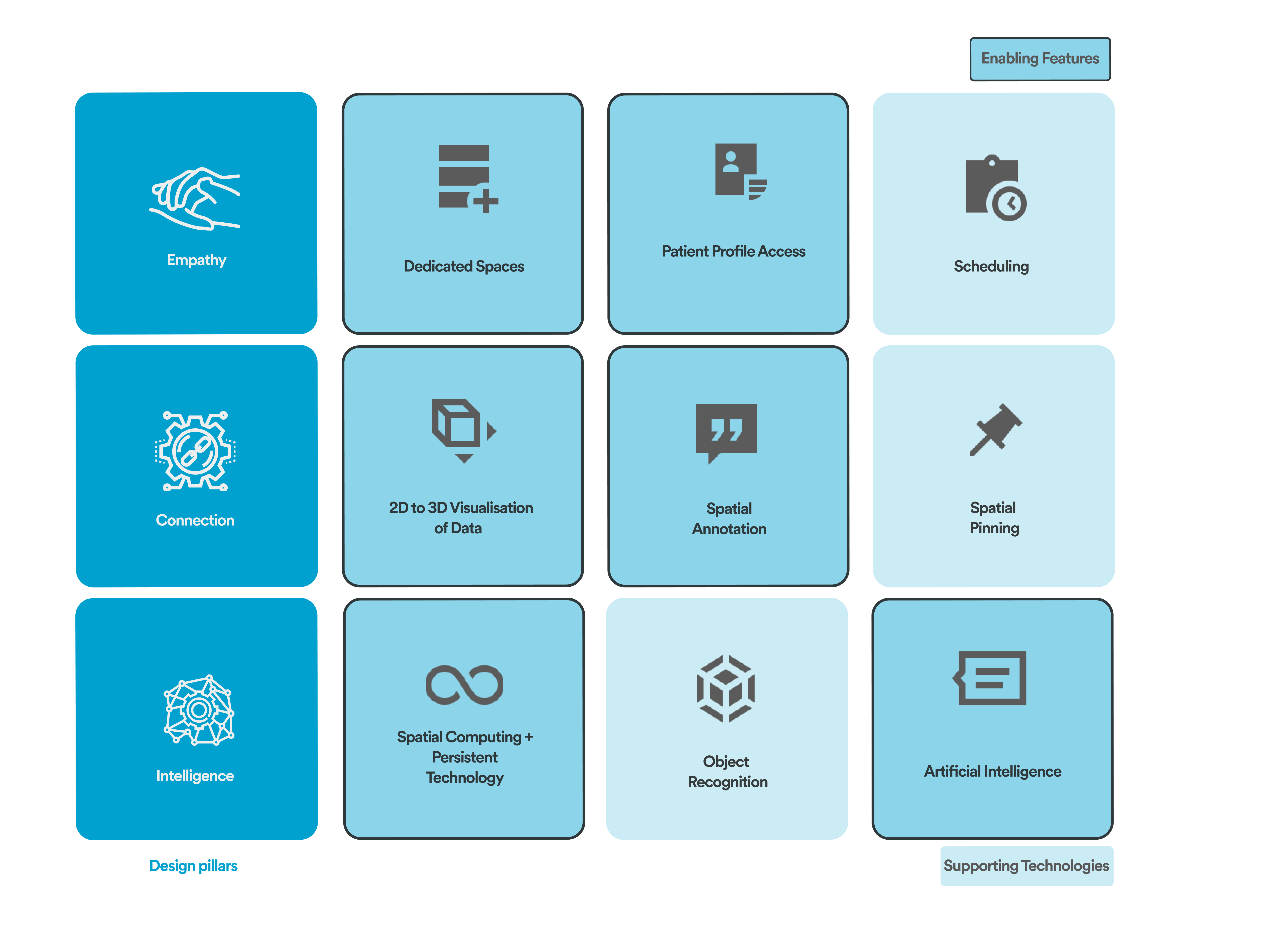
Design Guidelines
![]()

Journey map
Following the design guidelines that were set, I collaborated with another team member to create journey maps for each proposed environment. The maps comprise every technical interaction that the physician would need to go through.
Following the design guidelines that were set, I collaborated with another team member to create journey maps for each proposed environment. The maps comprise every technical interaction that the physician would need to go through.



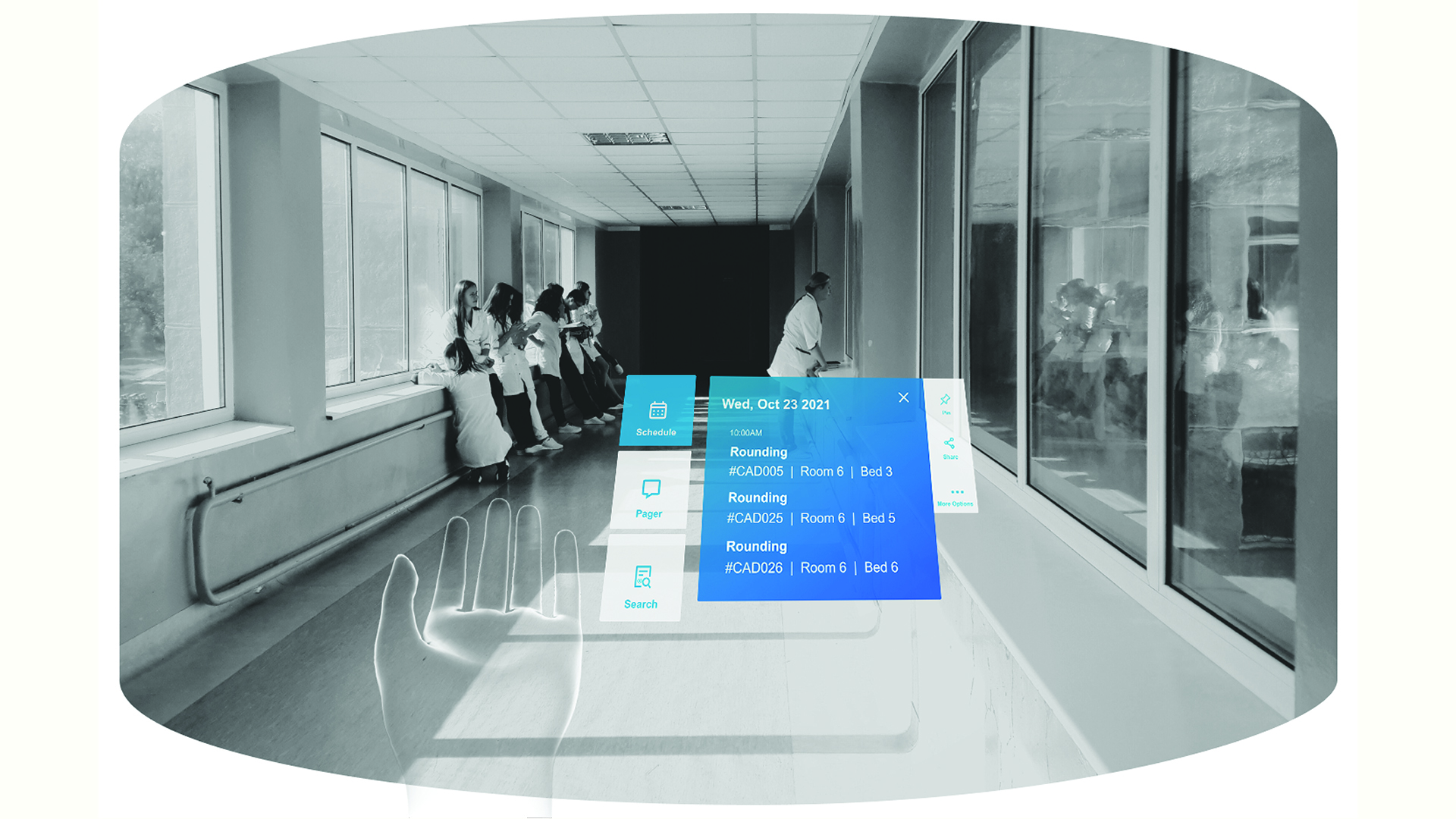
Developing
a solution catering to
one opportunity area won’t solve
the physicians’
burnout.
Hence, there is a need to design a holistic system,
integrated with their
workflow environment.

Develop
Based on the ideal journey of the physicians’ workflow, we identified user interactions, UI components and features leading to the development of the spatial and interaction design guideline. Based on this the team developed prototypes and proof of concept for the client.


My Key Takeaways
This was one of the most challenging projects, as bringing the team together and making quick calculated decisions were essential for a successful outcome. It was vital for me to understand each member's skillset and assign them to teams accordingly.
Working in this unknown domain opened my mind to be more sensitive and aware of the structuring and execution of wicked design challenges.
The success of a team lies in efficient communication.
As a Project Lead, I understood the difference between a leader and a director and based on the situation I was able to wear both hats.
The Team
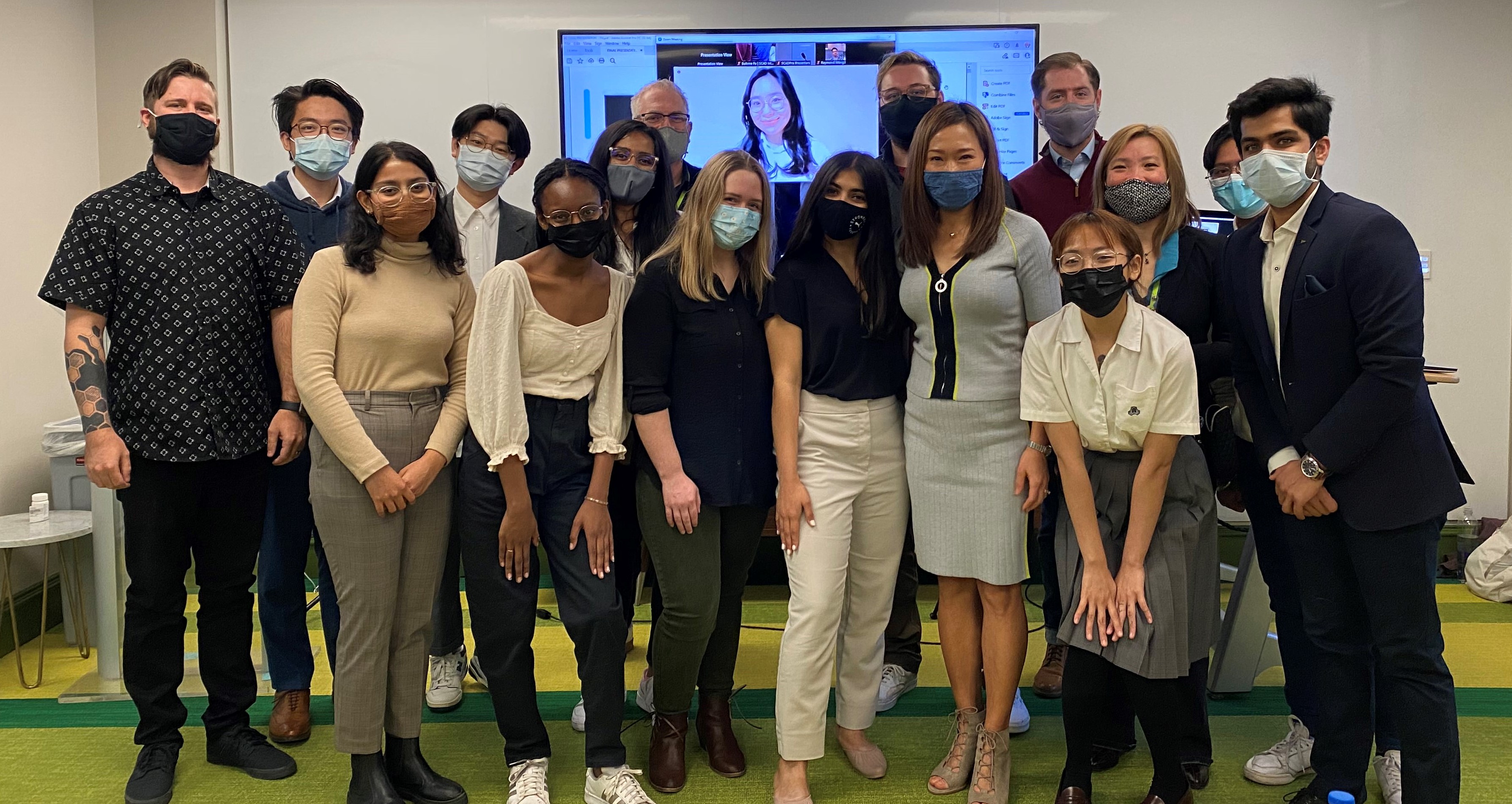
Project timeline and defined team golas
![]()

Made by Ojas Gupta, 2024